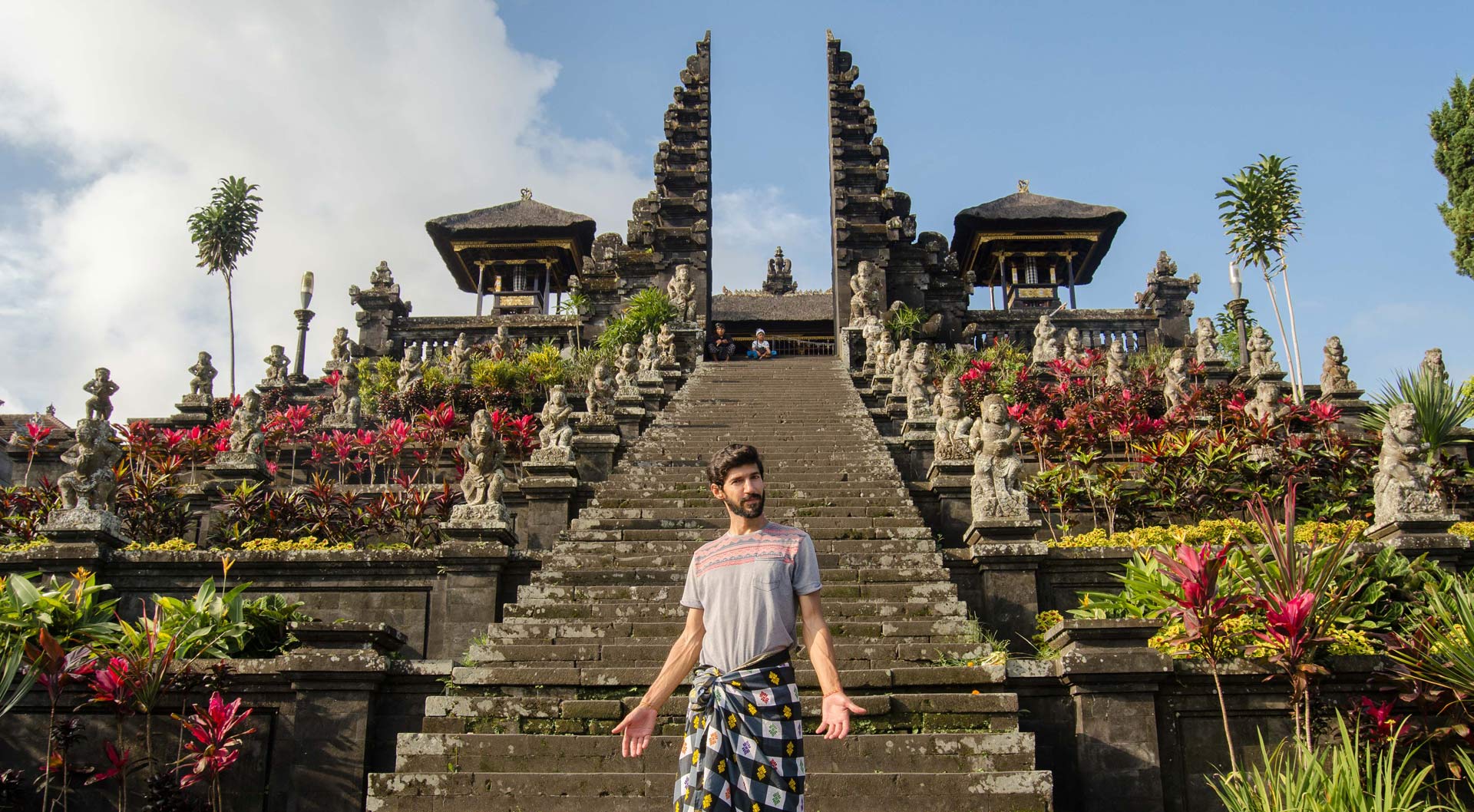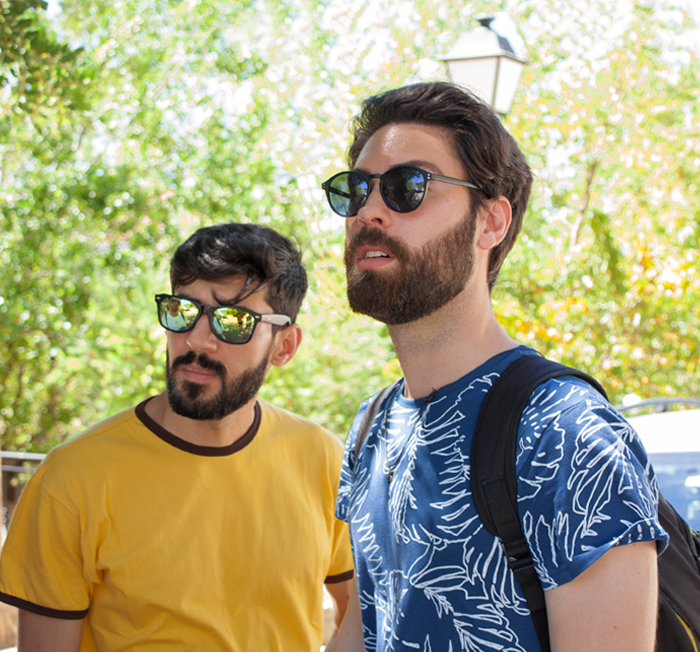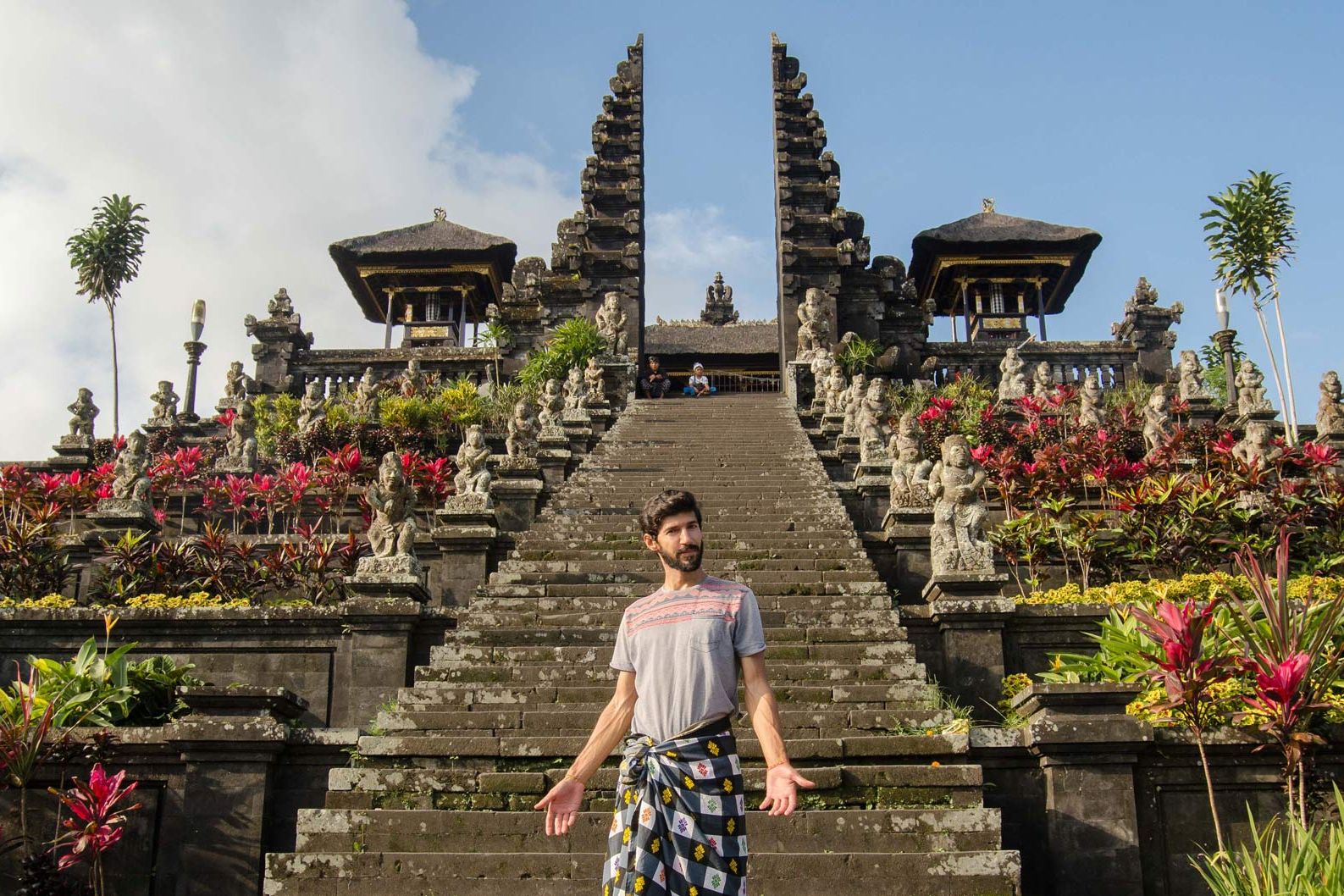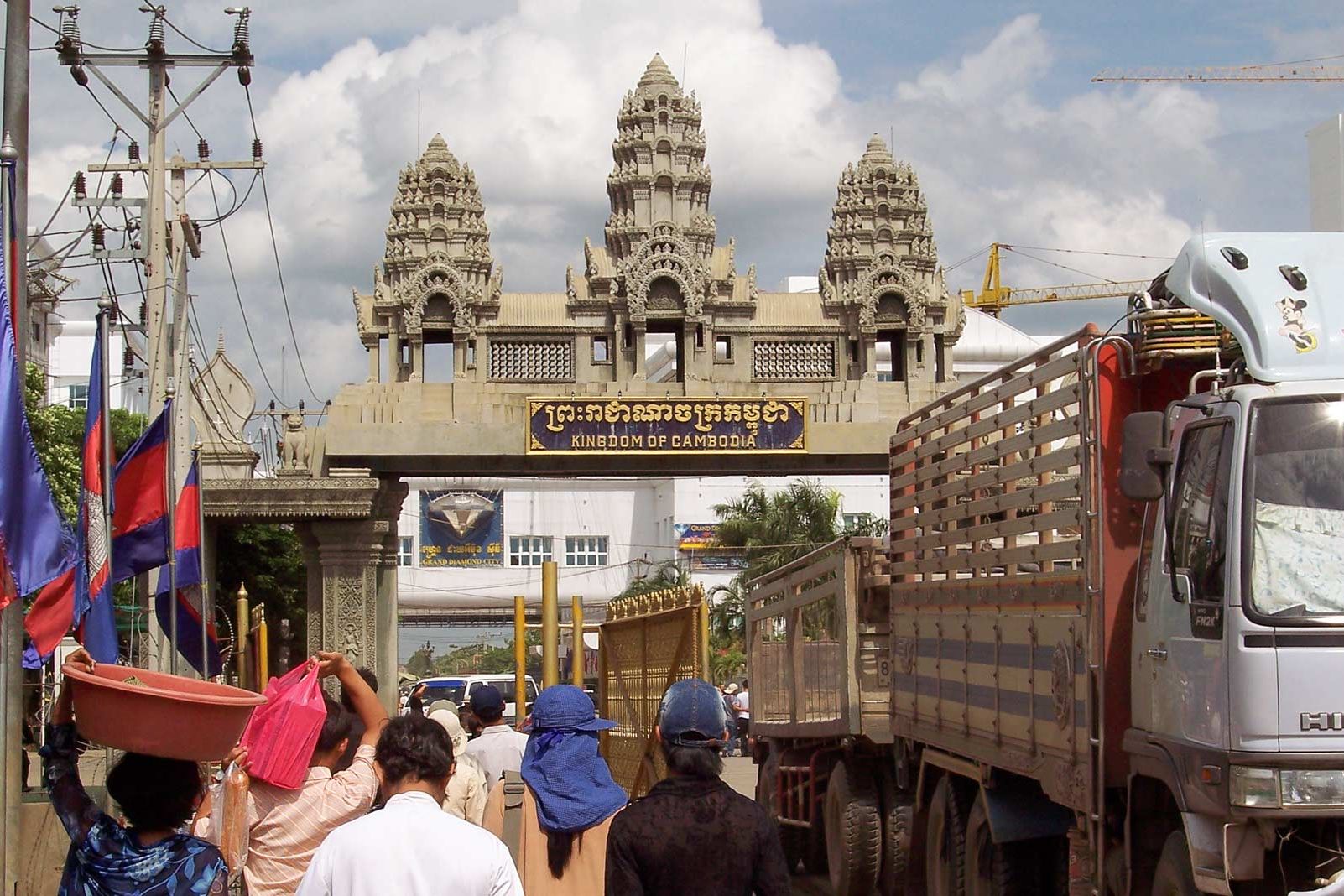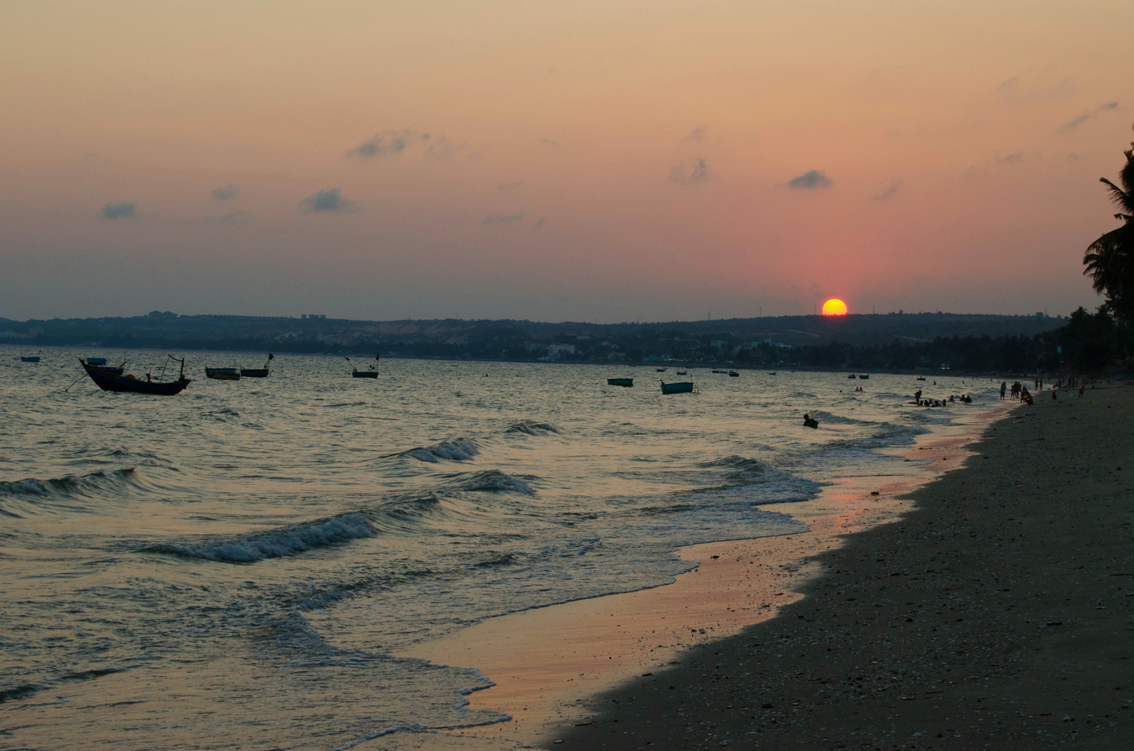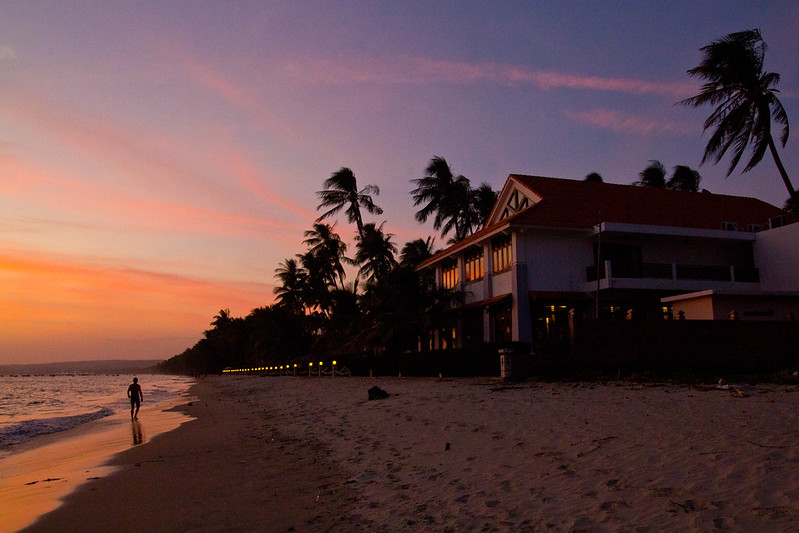Travel Etiquette: Good tourists vs Bad tourists
Tourism can be of great social, cultural, and economic value to everybody involved — the visitor and the visited. And a big part of it will be determined by the type of traveler you are.
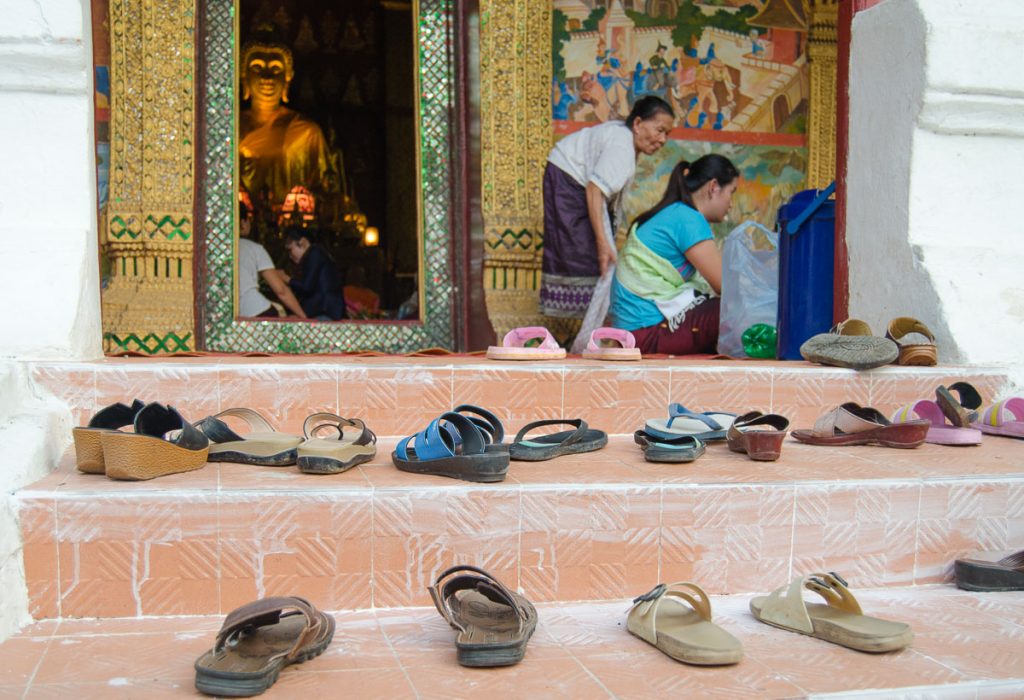
Bad Tourists
There’s nothing worse than a petulant tourist making a scene at a 3rd world restaurant because he’s a bit peckish and no one in the staff can speak English, right?
Actually, there is: seeing empty water bottles and soda cans scattered everywhere as you’re visiting the temples of Angkor, or the words “Jenny 2006” carved into the stone walls of a World Heritage site. And let’s get real: not a single Cambodian girl is named Jenny. Jenny is the pet name for Jennifer — a privileged western girl that flew to Cambodia thanks to the earned miles from her credit card, and thought it was cute to leave her mark on the other side of the world.
Please, don’t be Jenny.
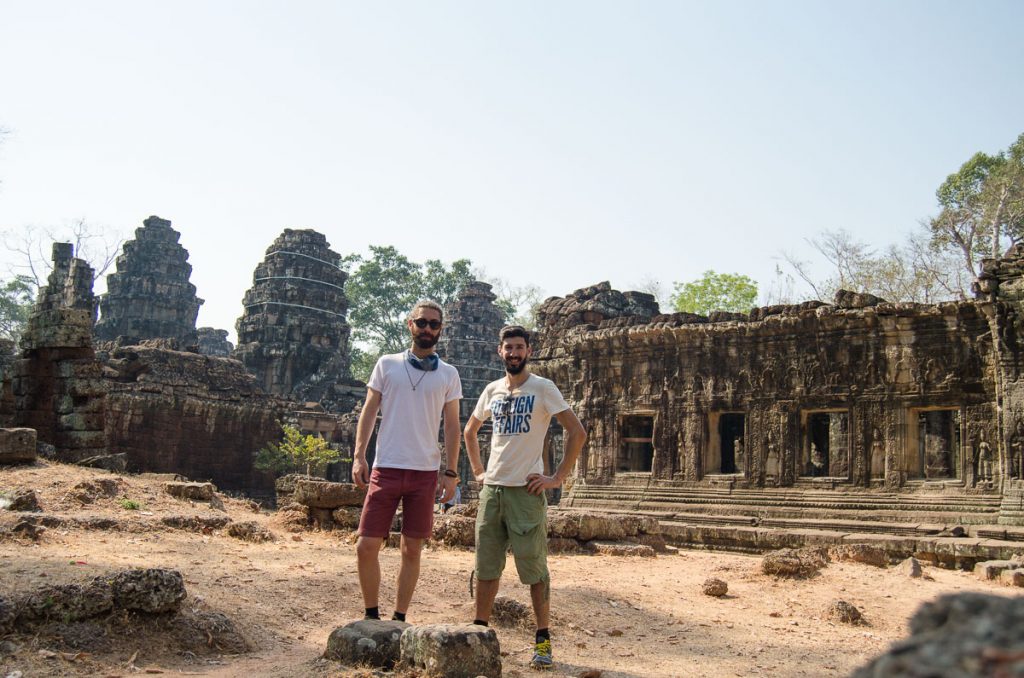
Environmental Conscience and Cultural Respect
Here’s a simple way to put it: when you travel you’re always a guest in someone else’s home, so behave accordingly.
You may not agree with all the customs of the country you’re visiting but that’s your prerogative.
But we’re not asking you to compromise your values though: Nuno and I spent whole days carrying trash in our backpack when the norm was to throw it on the ground.
On our trip to Southeast Asia, we never engaged in activities involving elephants or any other animal because let’s face it: even though elephants are adorable, these tourist activities are businesses, and many times the proper treatment of the animals is often not a priority.
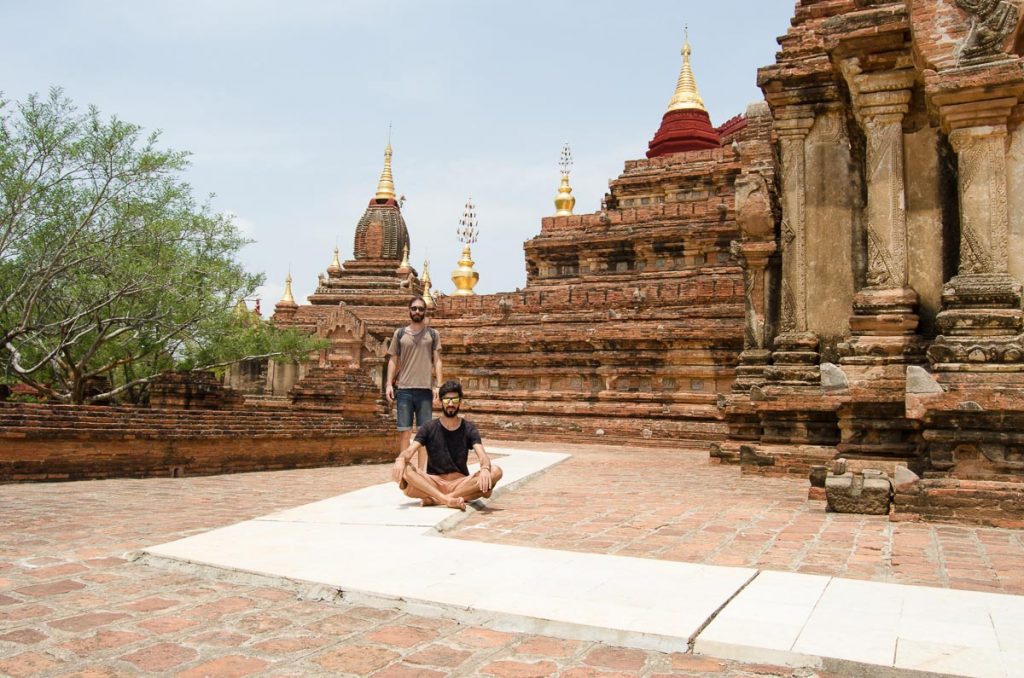
Using the photo above as an example: we’re not Buddhists, the floor was scorching and nobody was around to make sure we weren’t wearing shoes, but we didn’t anyway. This is a sacred place to the Burmese and they always walk barefoot when visiting temples.
Let the uncomfortable situations serve you as a contrast to appreciate what you have back home. We all love to yap about how we ‘travel to experience different cultures’, well the bumpy bits are part of the experience too, so learn something from them!

It’s key to be respectful and ask for permission before snapping pictures of locals. Always be sensitive to the situation, respect local rituals and ceremonies by being the least invasive as possible. Otherwise, you’ll end up one of those rude paparazzi-tourists we witnessed in Luang Prabang during the alms giving ceremony—revealing their lack of information and detachment from the culture they were in.
Good tourists travel like locals
A good practice for all of us travelers is to do some research on the customs and traditions before visiting any given place. By educating ourselves on the social reality of a country, we’re providing insight into our minds and empathy to our hearts.
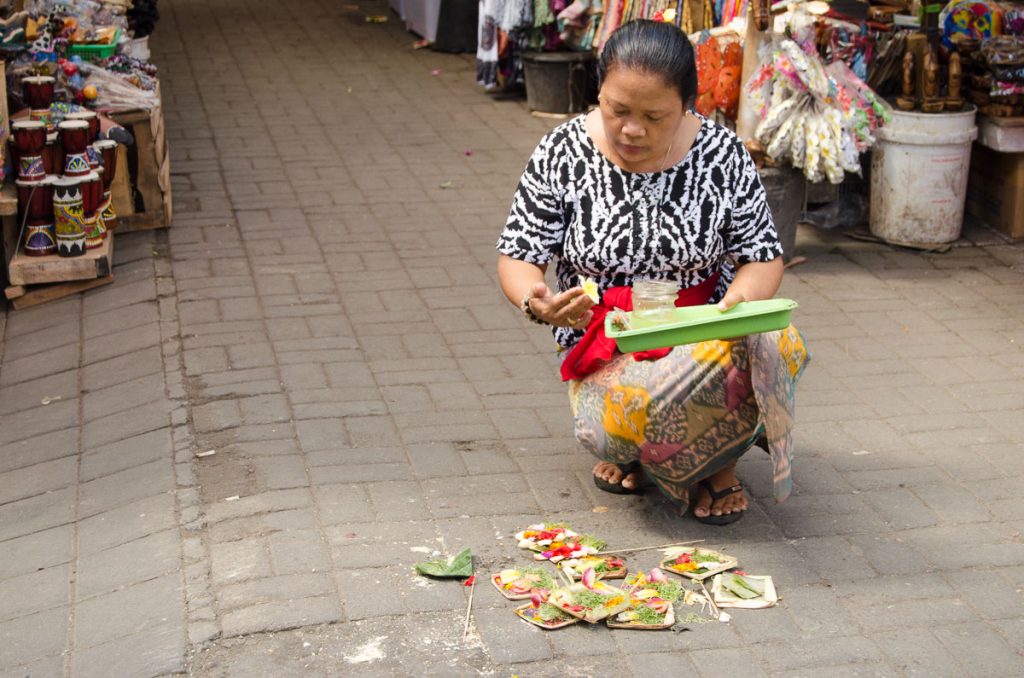
Don’t be rude when people don’t understand English. In fact, you shouldn’t expect them to.
Learn some basic words in their language even if just “Hello” or “Thank you” — it’s a sign of consideration. Smile and use any interactions as a way to learn some new vocabulary!

Keep in mind that you’re the one on vacation, traveling, and probably having the time of your life, but locals are just going about their daily routine. The same day, but VERY different perspectives.
Be a conscious consumer and buy locally made products to support local communities. Go eat at local restaurants, taste new flavors, and enjoy the country’s cuisine. Eat the fruits locals eat, drink coffee the way they drink it, and avoid sugar-filled plastic packaged crap when you feel like snacking.
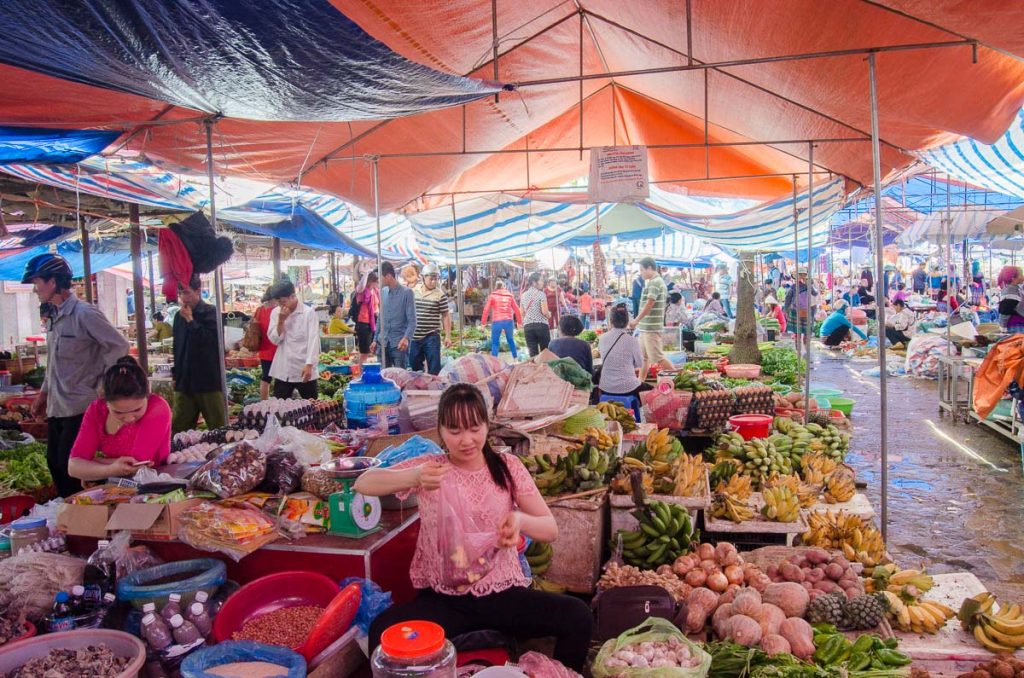
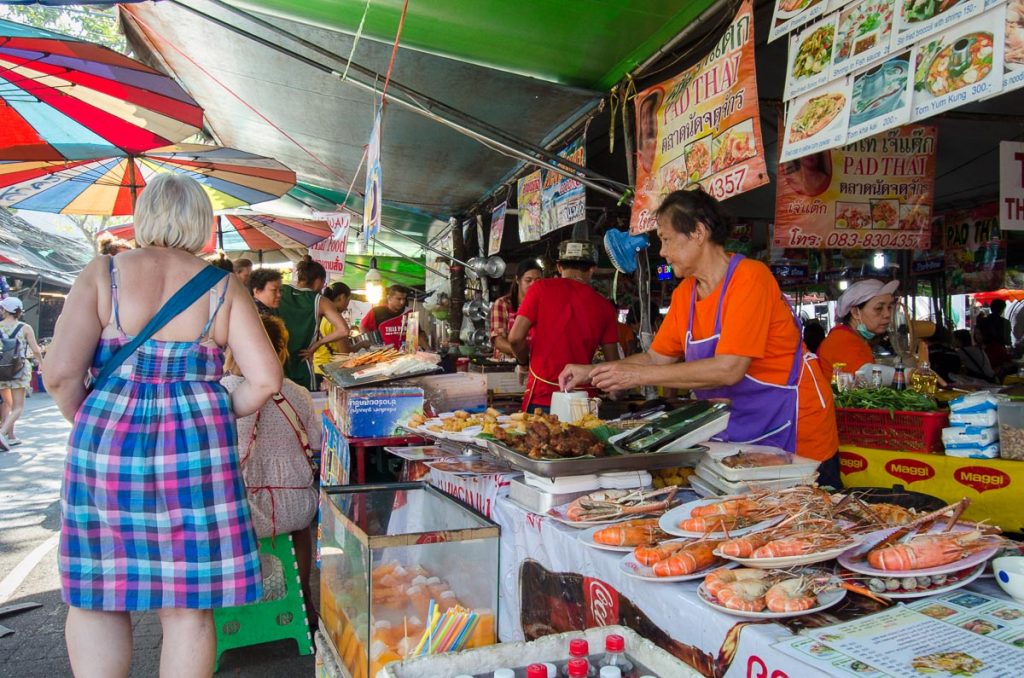
When choosing accommodation, stay in locally owned guesthouses instead of international hotel franchises, and remember that buying locally will always cost you less!
You don’t need to wear a hijab as soon as you arrive in a Muslim country because is common for local women to do so. Just be mindful and dress appropriately to not be walking around a Buddhist conservative country with a bedazzled bikini top and cut-off shorts because ‘it’s like, really hot outside’.
That’s something Jenny would do.
Remember: don’t be Jenny.
Be polite, positive, and eco-conscious.
Do you have other examples of good tourists and bad tourists?
Leave them in the comments below!
Mui Ne and the Police
After more than 5 hours on a bus, we arrived in Mui Ne at dinner time. The bus company we traveled on (Futa), conveniently dropped everybody at their accommodations—don’t know if it’s company policy or because all hotels are on that main road.
It was weird to travel on a sleeping bus during the day, luckily the WiFi worked just fine.
Looking for transportation to Mui Ne? Check out www.bookaway.com.
To get 5% off the ticket price use the code “gravy5″ at checkout.
As soon as we got our room at the 247 a/c Guesthouse we dropped the backpack on the floor and headed out to hunt for some dinner. Starving and not being fans of seafood, we needed some alternatives.
As we walked along Mui Ne’s main road a nice Vietnamese lady selling kitesurf packages and boat excursions invited us to see her menu. We were hungry and the photos on the menu looked good, so we said ‘yes’.
Let’s just say that we learned something that night: travel agencies are not restaurants.
Two days later we found an open-air food court named Dong Vui Square. A really cool place with a great selection of foods: from noodles to paella.
Mui Ne Beach
The next morning, after a bowl of fruit and muesli—which reminded us of our breakfasts in Ayutthaya—we went off to the beach. Or tried to at least.
From the terrace where we had breakfast, we could see the water peeking from between the houses. Even though it was right there in front of us, reaching it was a pain in the ass. Here’s why: along that main road we mentioned before, all sorts of buildings and private properties form a barrier between people and the beach.
To reach it we had to trespass private property, and like Bonnie & Clyde, we did. Later that day we found a “legal” crossing near the local market.
Mui Ne is a fishing village and the small round boats that look like plastic kiddie pools anchored in the open sea prove it.
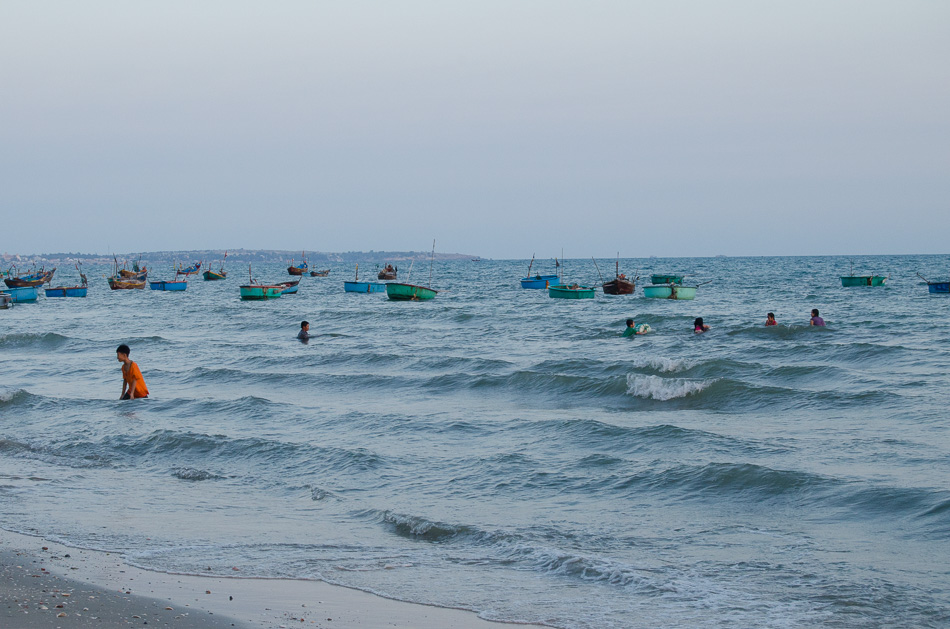
The coastal strip of sand stretches for several kilometers and is lined with tall coconut trees. The water is blue and the sun shines all year round. The beach has the potential to be in any travel catalog if it wasn’t for all the garbage scattered everywhere. So after a chat in the sand, we left.
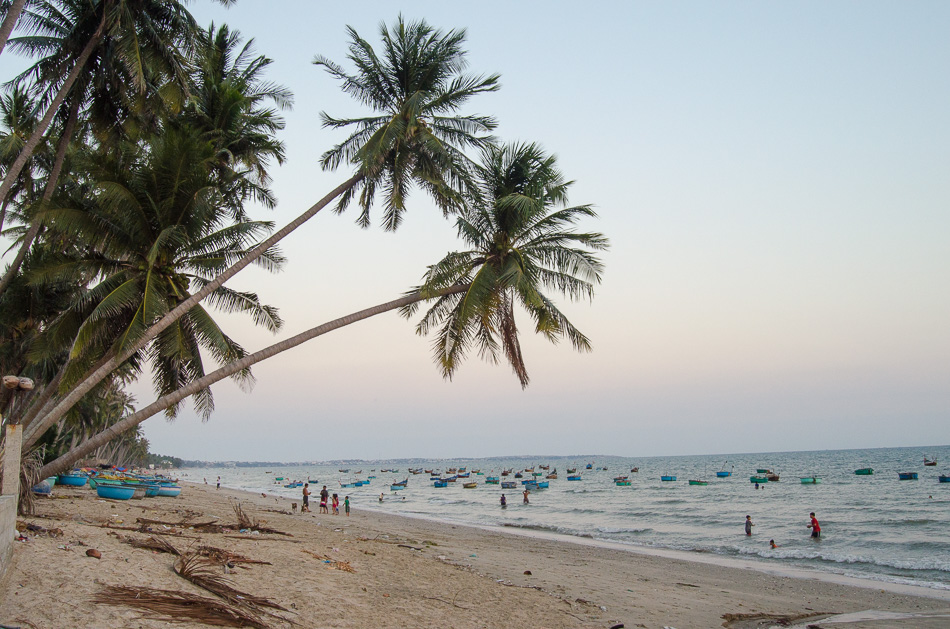
To explore more of Mui Ne, we rented a scooter.
The more west we got, the cleaner the beaches and the ocean.
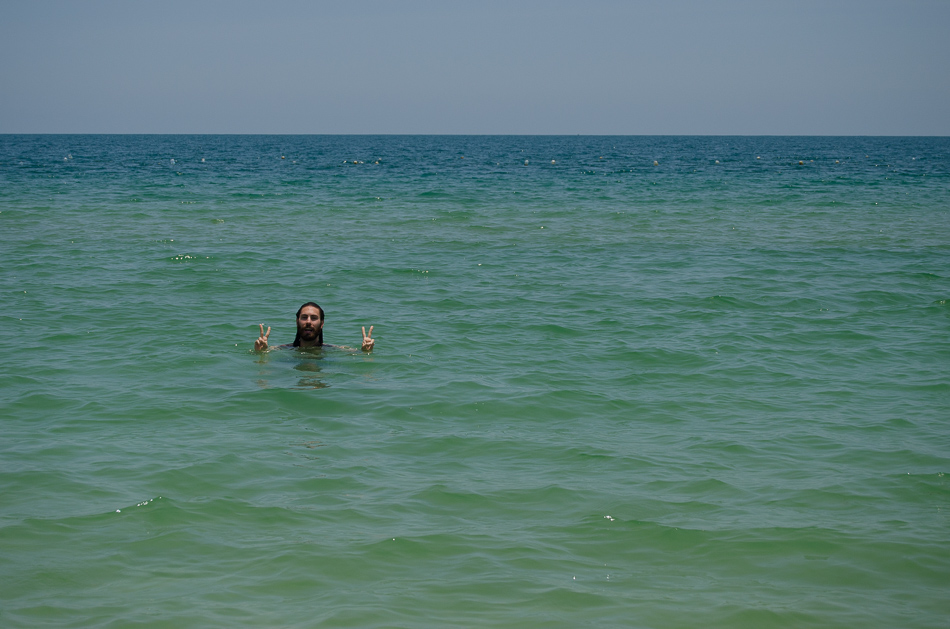
Learning to ride bikes in Kampot and understanding the convenience of driving, gave us the audacity to think that ‘from now on scooters are the way to go‘. So we rented one directly from our guesthouse for 80,000 Dongs (€ 3,20) for a whole day.
We rode to the actual fishing village of Mui Ne that appeared to have more boats than people. Unfortunately, besides a beautiful view from the high points, there’s not much to do around here. We stopped for lunch and took some photos.
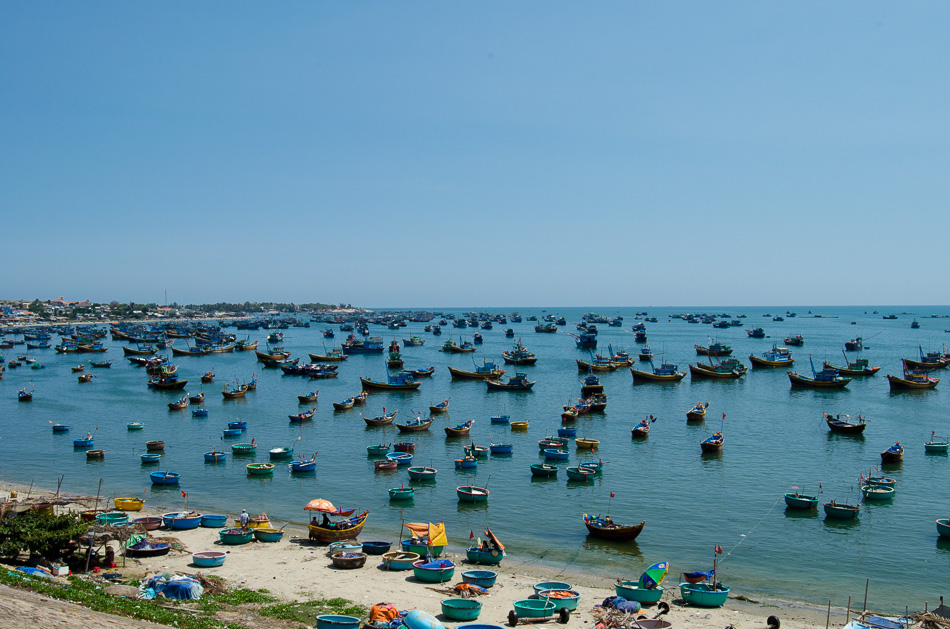
Running on the floor of the restaurant was a big rat looking for food, completely unfazed by humans—we named it Bertha.
Bertha looked strong and healthy, so the food had to be good.
Problems with the po-po
After lunch, we hopped on the bike and headed towards the White Sand Dunes of Mui Ne. Halfway through, two police officers pulled us over.
A very friendly officer holding a booklet approached us and asked for our international driver’s license, which we didn’t have. However, we anxiously flaunted our regular Portuguese ones, but by now, we knew we were in trouble.
He looked at us, frowned condescendingly, and flipped through the booklet showing us a bunch of gore illustrative images of what can happen to tourists driving without an international driver’s license. His portfolio included:
• Amputee tourist
• Tourist blood
• Reckless tourist speeding
• Tourist in a wheelchair
• Drunk tourist getting drunker planning to drive afterward
• A WordArt clock representing the short life of tourists that drive outside their country
Finally, he pointed to the page where the traffic fines were. According to him, it said we had to pay 1,200,000 Dongs or he would have to arrest us.
We didn’t have that amount of money, so he flipped the page again to a clause saying we had to pay 800,000 Dongs—which we didn’t have either.
Nuno and I were frantically searching for money in our wallets, pockets, and backpack. All we managed to put together was 300,000 Dongs and a pre-diarrhea feeling.
Seeing how upset we were, he grabbed the money from our hands, smiled, and said:
– Shhh. Ok, ok. I am your friend… You can go now. No more police ahead.
That was the moment we realized what had happened: we got scammed by a police officer. How nice!
We turned around and headed back to our guesthouse.
Getting over it
After doing the conversion from Dongs to Euros we realized that he ‘confiscated’ just €12, but it could have been much more.
To take our minds off what had happened, we went hiking in the Fairy Stream near the Mui Ne main road—as you may have noticed, almost everything extends along this road.
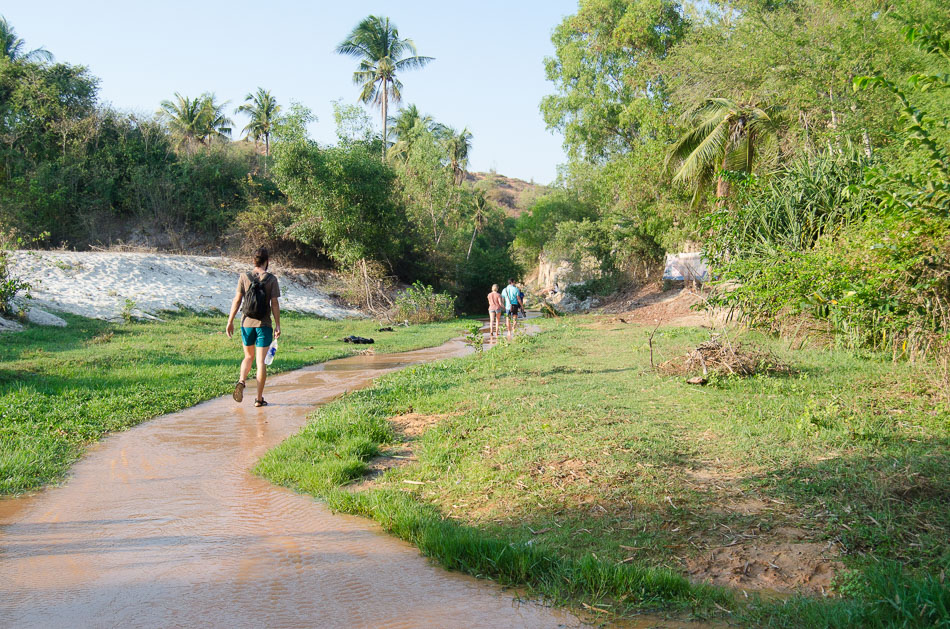
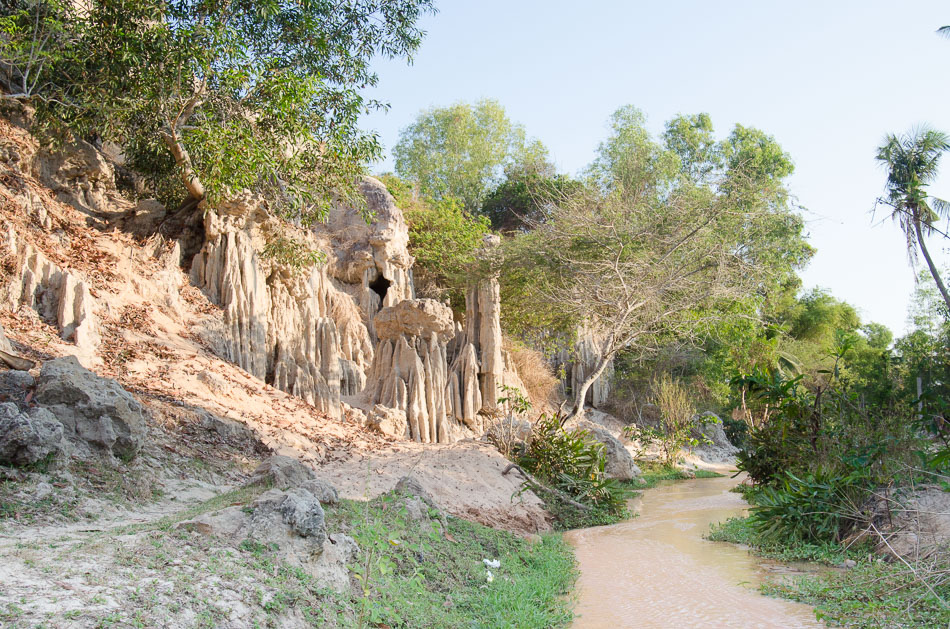
It is a small stream of freshwater where you can walk on and enjoy the surroundings. There are red dunes, rock formations, trees, ducks, and cows walking around.
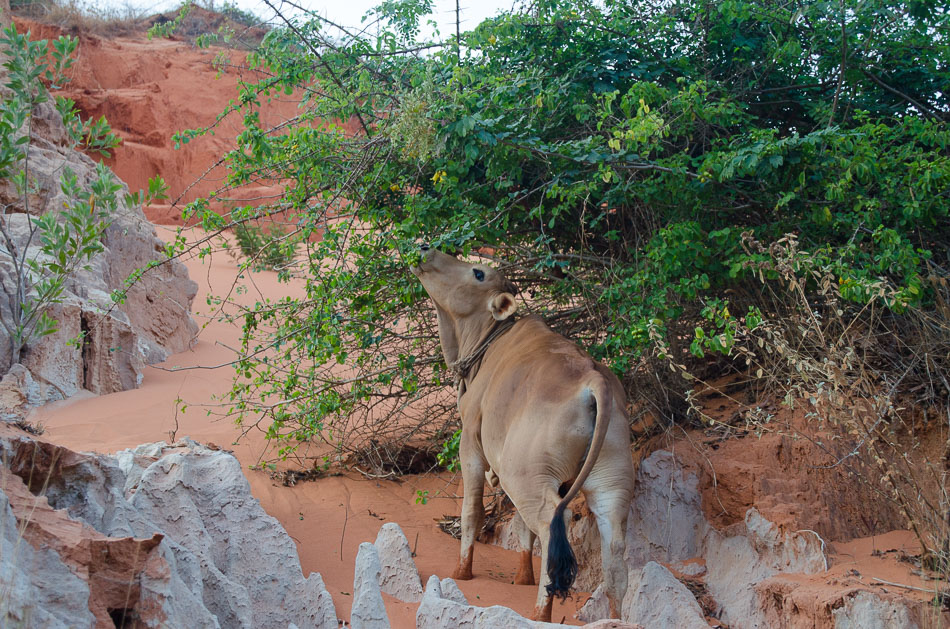
There’s no entrance fee around here, but rumor has it that some crafty locals might try to charge you for it. Also, if you get there by bike you will be charged for parking. To avoid it, park further from the entrance and walk there.
As a maritime zone, Mui Ne is slowly attracting upscale tourists to all the fancy resorts by the sea. It might not have much to explore, but it offers you good weather and a relaxed environment. Especially if you don’t find any police.
Mui Ne travel expenses (Daily average for 1 person)
Breakfast: € 1,85
Lunch: € 1,64
Dinner: € 3,31
Water: € 0,19
Coffee: € 0,57
Accommodation: € 3,50
Scooter: € 3,20
Half tank of fuel: € 1,18
If you have any questions or some extra info everybody can benefit from, please leave it down in the comments!
